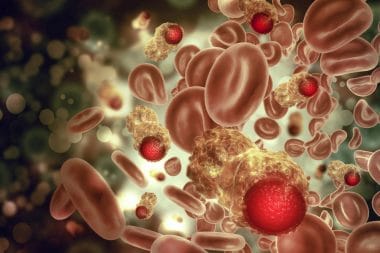Neutrophil is a type of white blood cell. It is the main part of the body’s defense against infection and is also known as granulocytes. Neutrophils are the most abundant type of white blood cells and make up between 50 and 80% of the total number of white blood cells in the blood. This blog will look at what neutrophils are and how they work.
What is Neutrophil and how does it work?
Neutrophils are immune cells that are produced in the bone marrow and are the most abundant immune cells found in the blood. They are the first to arrive to the site of infection or injury, and are key in fighting off infections. Neutrophils are specialized in destroying microbes that enter the body. They are usually the first defense against bacteria. They also play a role in tissue healing and transplant rejection. Neutrophils are the most abundant immune cells found in the blood, making up 50-70% of all white blood cells.
Neutrophils have a short life span only 7 to 10 hours do they circulate in the blood stream. New neutrophils are constantly produced in your bone marrow. The number of neutrophils in the blood varies by individual based on age, health and environment.
Levels of neutrophils increase naturally during infections, injuries and stress. High levels can also indicate pregnancy, obesity, recent surgery, recent accident, rheumatoid arthritis, or hepatitis along with other chronic conditions.
Low levels of neutrophils (Neutropenia) indicate that the body is using immune cells faster than they are being produced or your bone marrow is malfunctioning. This can indicate a chronic bacterial infection, an allergic disorder or an autoimmune disorder.
What do white blood cells do?
White blood cells are the cells in the body responsible for fighting off disease. They do this by attacking foreign invaders (bacteria, viruses, etc.) or dead or dying cells, while at the same time, avoiding healthy cells. White blood cells are responsible for keeping the body healthy by identifying and destroying unwanted invaders. The cells are also responsible for keeping the lymph channels clear, which also aids in the body’s immunity against disease. The cells are made in the bone marrow and then released into the blood stream. The blood stream carries them to different parts of the body, where they are needed to fight off infections.
What does a complete blood count include?
A complete blood count (CBC) can tell you a lot about your health. It measures the amount of red blood cells, white blood cells, and platelets in your blood. It can also tell you if you have an infection, anemia, or other blood problems. Your CBC results are compared to the lab’s reference range for your age, gender, and ethnicity. The results are often given as a percentage. For example, if your CBC shows that your white blood cell count is 12,000 cells per microliter, it means that you have 12,000 cells per microliter in 1 milliliter of blood. This is about 3% of the normal white blood cell count for a person of your gender, age, and ethnicity. Your doctor can use this information to figure out what’s causing your symptoms.
A complete blood count includes a count of the red blood cells, white blood cells, and platelets in a sample of blood (serum). A CBC is often ordered along with other tests (such as a sedimentation rate or ESR) when a doctor suspects you have an infection or inflammation. The CBC is also used to monitor leukemia, anemia, or other blood disorders.
What does a high white blood cell count mean?
High white blood cell count (WBC) isn’t always a sign of infection. The WBC (also called the white blood cell count) is a measure of the number of white blood cells (WBCs) in a given volume of blood. White blood cells are the cells that fight infection in the body. A normal range is 4,800 to 11,000 white blood cells per microliter (µL) of blood. A high white blood cell count (leukocytosis) may be caused by infection, stress, or cancer.
What does a low white blood cell count mean?Â
A low white blood cell (WBC) count is a medical term used to describe a blood test result. A low WBC count is not a disease in itself, but rather is an indicator of an underlying medical problem. The WBC count can be useful in diagnosing conditions such as infections, autoimmune diseases, and cancers.
What is Nuetropenia?
Neutropenia is a medical condition in which the level of neutrophils (a type of white blood cell) is significantly lower than normal. Neutrophils are a type of white blood cell that fights infection. When the number of neutrophils in the blood drops below normal, it can cause a heightened risk of infection. Anyone can develop this condition, but it is most common in people who have undergone bone marrow transplantation and people receiving chemotherapy for cancer.
Neutropenia can be acute or chronic. Acute neutropenia is a sudden or rapid decrease in the number of circulating neutrophils. It is often a side effect of chemotherapy and is treated with antibiotics. Chronic neutropenia is a low-level decrease in the number of neutrophils that lasts longer than four weeks. It can be caused by an underlying disorder or by the side effects of certain medications. Chronic neutropenia is treated with the goal of addressing the underlying cause.
Why take a blood test?
A blood test can be a good indicator of your overall health. If you are in good physical shape, then the results of the blood test will show that. An unhealthy lifestyle will produce unhealthy results. You can learn much more about your health by getting a blood test than you can by just paying attention to how you feel.
Like any other test, there are ways to improve the accuracy. A blood test should be taken in the same environment, at the same time of day, and with no major changes in diet or exercise. You should also not eat or drink anything thirty minutes prior to the blood test. Your doctor will ask you to avoid certain activities for a few days prior to the blood test, to ensure that the results are accurate.
Blood tests measure many different things, including the levels of glucose, potassium, sodium, and many other chemicals. The doctor will look for particular values in each of these, but individual results can vary depending on the person taking the test.
Conclusion:
A neutrophil is a type of white blood cell called a polymorphonuclear leukocyte (PMN). Neutrophils are formed in the bone marrow and circulate in the blood stream. The primary function of neutrophils is to seek out and engulf foreign particles such as bacteria, fungi, and parasites. A normal human blood stream contains about 100 Billion neutrophils.
A blood test can be a good indicator of your overall health.  Blood screening is a diagnostic test that measures the level of certain substances in the blood. The healthcare provider will take a sample of your blood, usually from a vein in your arm, and send it to a laboratory for analysis. The sample is usually taken by a phlebotomist, a healthcare professional who specializes in collecting blood samples.
READ MORE:Â What Are The Most Common Types Of Blood Tests Performed?
Neutrophils are the first cells to attack an infection. #HealthStatus
Neutropenia is usually diagnosed during a normal blood screening.
Sources:
https://www.cancer.gov/publications/dictionaries/cancer-terms/def/neutrophil
https://www.mayoclinic.org/symptoms/neutropenia/basics/definition/sym-20050854
https://www.medicinenet.com/what_does_it_mean_when_your_neutrophils_are_high/article.htm









Reply